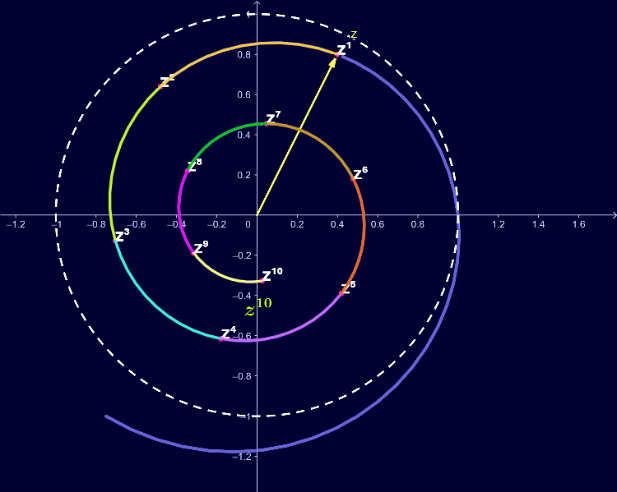Powers of Complex Numbers
DeMoivre’s Theorem
Let be a complex number and n any integer. Then
zn=(rn)(cos(n)+isin(n))
NOTE:
In calculating the powers of complex numbers, a complex number z=a+bi must be written in polar form. Then, you can find zn as the complex number
- whose absolute value is |z|n, the nth power of the absolute value of z,
- whose argument is n times the argument of z.
Geometric or exponential spiral

![[size=100]The second figure shows the complex number z whose absolute value is |z| = 1.1, and whose argument is 84.81°. Since [b][color=#0000ff]|z| is greater than one[/color][/b], it is outside the unit circle. Each higher power is 84.81° along and [b][u]away from 0[/u][/b].[/size]](https://www.geogebra.org/resource/gextawq8/Xts7Z8zA1pZ72Nu1/material-gextawq8.png)
Activity:
The following applet you can use to show the spiral of powers.
Move the sliders a and b to test for different complex numbers.